2017 GMC Sierra Denali
| The Good: – Most premium-looking truck – Cabin trim and space – Power, economy and agility |
The Bad: – Not the most premium tech – Low front lip limits offroad – Rides a bit firmly |
The Ford F-150 might be America’s best-selling truck for several decades now, but out here in the Middle East, the Chevrolet Silverado and the GMC Sierra, badge-engineered brothers from the same mother, topped the Ford in sales regularly. While we haven’t taken a look at the local sales charts recently, the GM twins did take a critical beating when it was redesigned in 2014, generally for not changing dramatically enough from the previous model. So the trucks underwent a minor facelift in 2016, and so did the top-of-the-crop GMC Sierra Denali version, whose sole aim is to be the most luxurious pickup truck you can buy.
The facelift gave the GMC Sierra 1500 a larger grille and more external LED lighting, but the Denali still retains its trademark chrome mesh grille, mated with body-coloured bumpers and shiny 20-inch alloy wheels (22’s are optional). It’s a massive truck with an imposing presence that looks totally out of place in cramped streets alongside little fleet cars, but it’s also the fanciest looker in a segment which includes the Ford F-150 and the Ram 1500, both of which are equally big in crew-cab form. The Denali is a handsome truck, but it only has a single exhaust outlet, like the F-150, which does not look as fancy as the Ram Laramie’s dual exhaust tips.

When the big doors are opened, a powered side-step pops down automatically, making entry easy even for shorter folks. Inside, the Sierra’s interior is identical to the Chevy Silverado, but only in terms of the general design.
While the base models generally are hard-plastic tubs, this top-trim Sierra comes with a few wood and aluminium trim bits, a soft-touch dashboard with stitched leatherette, padded door inserts and window sills, and even padded doors for the two glove-boxes. However, the window-sills on the rear doors are still hard plastic. Still, with numerous power accessories and a colourful touchscreen, it feels like a regular premium SUV rather than a tarted-up work-truck, if you ignore the traditional column-mounted gear-shifter that GM loves a bit too much.
There’s tons of space, with big flat seats both front and back, while storage options are extensive, including a cavernous “ditch” between the front passengers thanks to the space freed up by having the aforementioned column-shifter. There are several cup-holders, pockets and cubbies. There is also stowage space underneath the rear-seat bench, but there are no underfloor cubbies like in the Ram. There’s that massive bed out back though, with a Denali-engraved bedliner and bumper-corner steps to aid loading, but order the optional bed cover if you want to store valuable goods back there.
Tech features are extensive, and include an 8-inch touchscreen with voice command, memory to save songs and contacts, Bluetooth connectivity, numerous USB ports, premium audio and Apple Carplay, aside from a colour screen between the physical gauges in the cluster and a rear camera. There are also heated/vented front seats with 12-way power adjustability, heated steering wheel, front and rear parking sensors, LED headlights and tail lights, LED bed lights, a very good dual-zone auto a/c, sunroof, locking tailgate and keyless entry. But for all that gadgetry, there is no smart key, no push-start button, no panoramic glass roof and not even rear a/c vents — all items offered in the top-spec Ford F-150, and some on the Ram 1500. The one unique feature it has is the smartphone charging pad on the centre armrest, but we only got it to work sometimes.
Safety features are up to modern standards, and includes front and side/curtain airbags, ABS and ESP, with an optional Enhanced Driver Alert Package that adds Forward Automatic Braking at low speeds, Lane Keep Assist that nudges the steering back in lane when not using indicators, IntelliBeam technology that automatically turns high-beams on and off depending on traffic conditions, Forward Collision Alert, Intelligent Brake Assist for hill-starts, and the Safety Alert Seat that gently vibrates the driver’s seat-bottom whenever the other systems give an alert, although you may initially mistake that sensation for something else the first few times it happens.

The regular Sierra comes with a 355 hp 5.3-litre V8 with 519 Nm of torque, but the Denali can be had with a 6.2-litre V8 shared with the Cadillac Escalade, as in our test car. Mated to a smooth-shifting 8-speed automatic, the monster motor makes 420 hp at 5600 rpm and 623 Nm of torque at 4100 rpm. Being the 4×4 model, our Denali can also switch between two-wheel-drive and all-wheel-drive, and has low-range gearing. It’s adequately powerful for a vehicle of this size, clocking the 0-100 kph run at 7.5 seconds, with a burst of speed coming in at higher revs. While low-end kick is decent, the Ford’s optional turbo V6 kicks much harder at lower revs before tapering off in power, allowing the more-powerful Denali to catch up and even pass the F-150 in a hypothetical drag race.
Fuel consumption is high when the motor is pushed all the time, but with a fair bit of 120 kph cruising allowing the cylinder-deactivation system kick in, we managed an impressive overall average of 14.5 litres/100 km (6.9 km/l) as per the trip computer.
The Denali rides a bit better than the regular Sierra owing to its variable magnetic suspension, but it’s still a bit firmly sprung (independent front, live rear), thereby amplifying its body-on-frame truck roots. The “damped jitter” is still present on all but the smoothest highway surfaces, but is less harsh, so it’s still smooth enough to be a daily driver. Yet it runs over larger bumps with hardly a jiggle, while being very quiet at highway speeds. And there is no serious floatiness compared to the more offroad-oriented Z71-suspended versions of the Sierra.
There is far less body roll too, as the Denali takes corners flatter and at decent speeds, with good body control in sudden directional transitions. At-the-limit understeer is predictable and easy to explore, but in daily driving, grip levels are fairly good from the 275/55 tyres. The steering is light and truckishly vague, but surprisingly, there is decent steering feel. The brake pedal is firm and easily modulated, while the disc brakes themselves are good too.
While all-round visibility is fine with usage of the big mirrors and rear camera, the real issue in the Sierra’s daily-driveability is its inability to fit within parking spaces as well as many of the cramped curving ramps in Dubai’s poorly-designed underground parking garages.
We didn’t try the Sierra offroad, but it should manage mild slopes with ease, with low-range gearing on call when needed. However, it won’t be able to tackle serious dunes without scraping its long underbelly or ripping off its low front lip (the latter exists to improve the truck’s aerodynamics for better fuel economy).
The GMC Sierra Denali is a very nice truck with the best interior materials ever in its class, but while it is a solid upgrade compared to GM’s older truck offerings, there are several key tech features missing that make it a less-compelling luxury-truck proposition than its similarly-priced American rivals. However, if you think you don’t need those specific features (like turbos and electronic shifters which could all very well be problematic out of warranty), and you’ll never have to park it anywhere tight, the Sierra makes a fine daily driver with hauling utility available whenever needed.
| Price Range: Dh 207,000-220,000 Current Model Introduced in: Body Styles: Engines: Transmissions: Setup: Suspension: |
Brakes: Front: discs Rear: discs Curb Weight: Length: Wheelbase: Top Speed: Test Acceleration 0-100 kph: Observed Test Fuel Economy: |
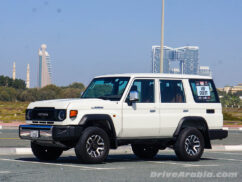
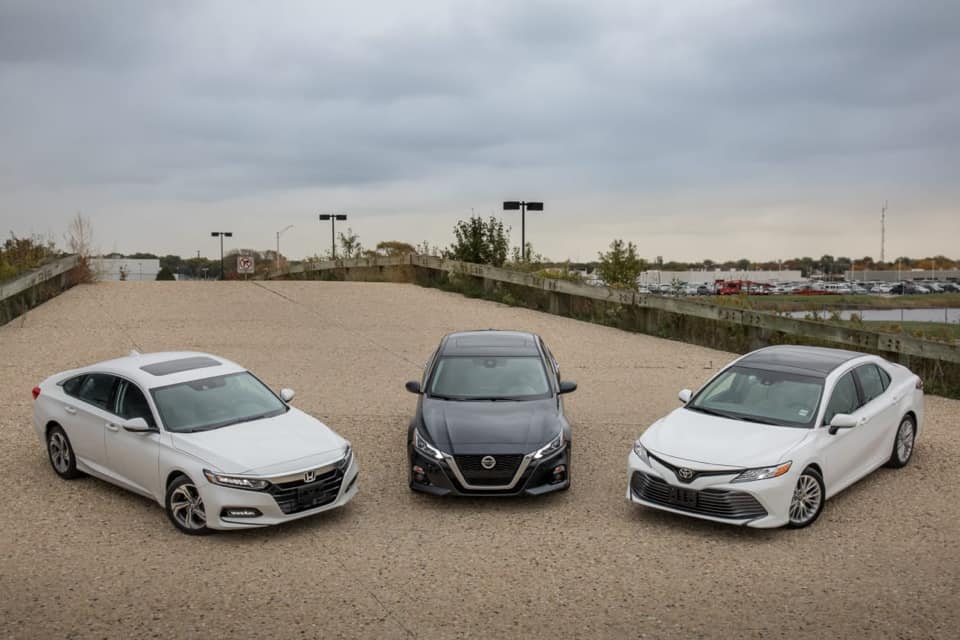
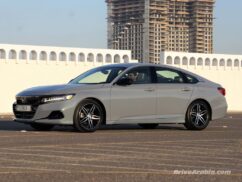
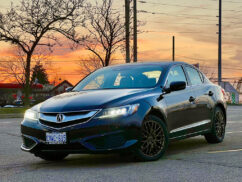
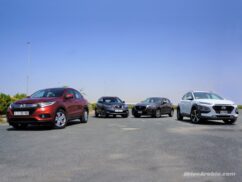
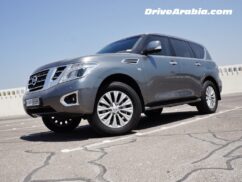
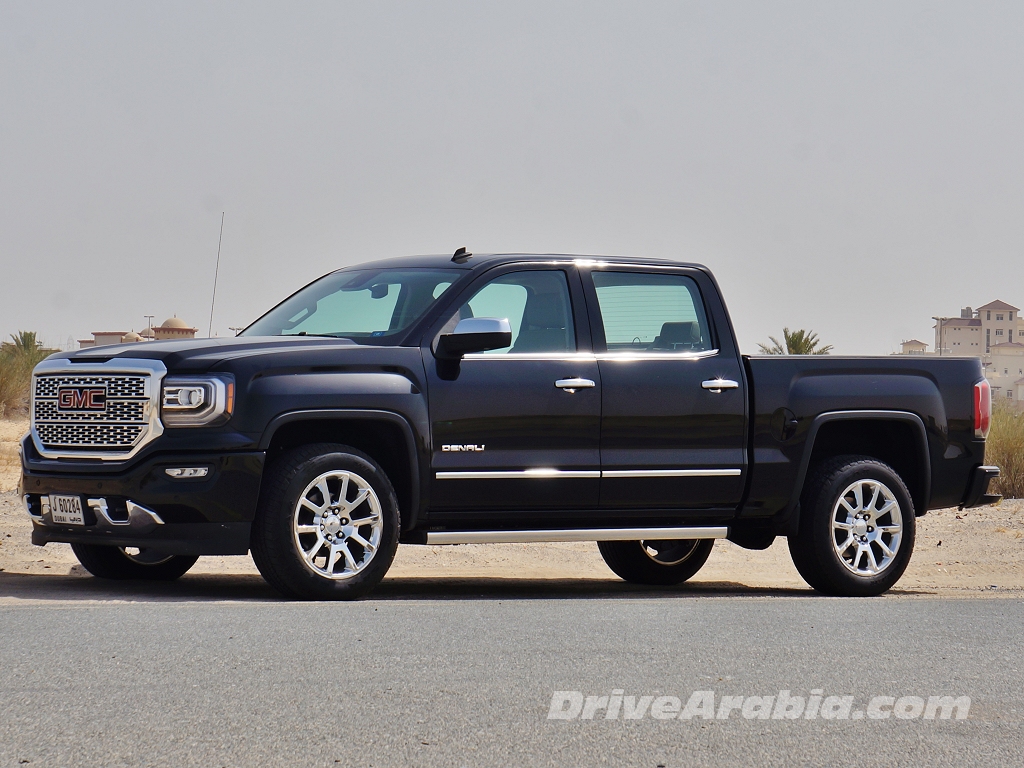
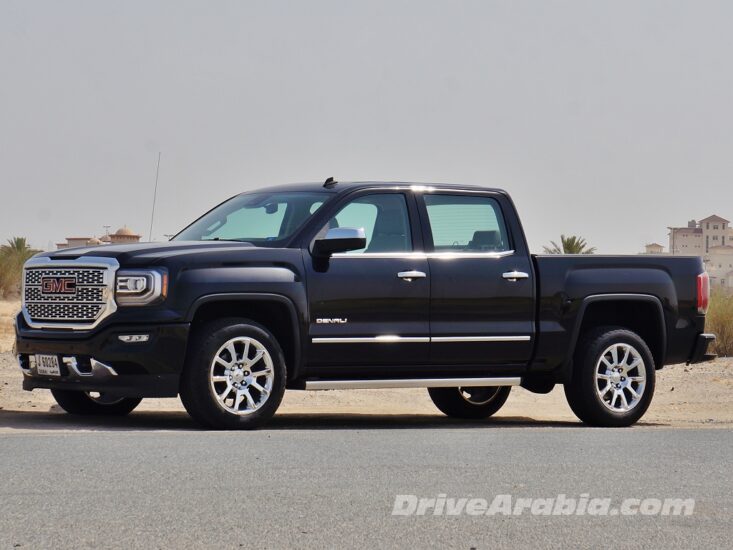



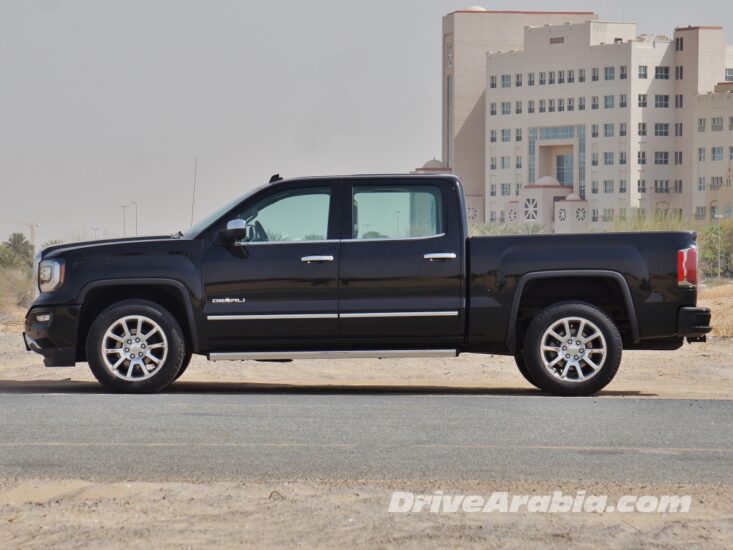


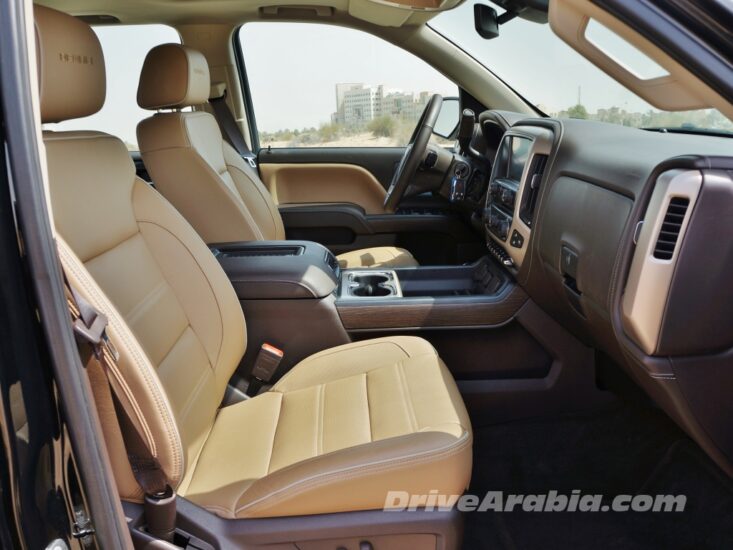
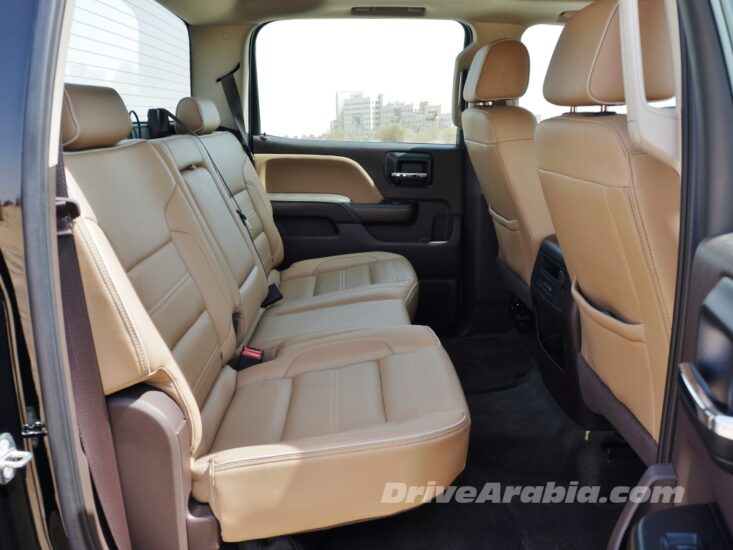
There are no comments. Be the first!